
I’ve just returned from an amazing trip of facilitating workshops, discussions and master classes as well as a keynoting a conference on “Measuring the Networked Nonprofit” in Australia and New Zealand. It made me very happy to be teaching non-stop for almost two weeks. I’m always learning as I help others learn. Here’s a couple of reflections from my “trainer’s notebook.”
I started with a full-day workshop outside of Auckland called “The Networked NGO in New Zealand,” this workshop was for activist organizations and focused on strategy, measurement, and best practices for managing and implementing social media as a network. Stephen Blyth, a nonprofit capacity builder who I met when I keynoted Connecting Up in 2008, hosted my trip to NZ and arranged for this workshop to take place on Makaurau Marae which is the land of Maori.
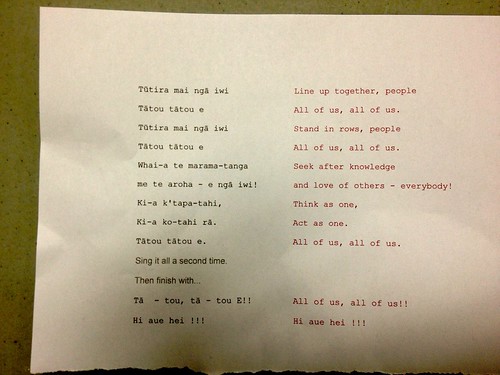
The workshop started with a welcoming ceremony. We sat in the hall – two rows – the guests and the Maori. We sang the song of welcome which is also about being networked and working together. After finishing the song, we rubbed noses which was a traditional welcome gesture. One thing I have learned working mostly outside of the US is to start a training by honoring a local tradition. I couldn’t have asked for a more authentic, culturally appropriate start to a workshop. The spiritual nature of the welcoming ceremony set the tone for a day of reflective practice for participants.
Effective learning that creates results and transfers to action over time starts with unleashing people’s existing knowledge – they need to pull forward pre-existing information. Too many times I have observed trainers simply launching into the new content without honoring what participants already know. You also need to challenge participants thought processes and stimulate curiosity about what you are teaching. This includes meeting and greeting people, setting up the room for interaction, getting people to move around, to be actively involved with the content, and appreciating learners.
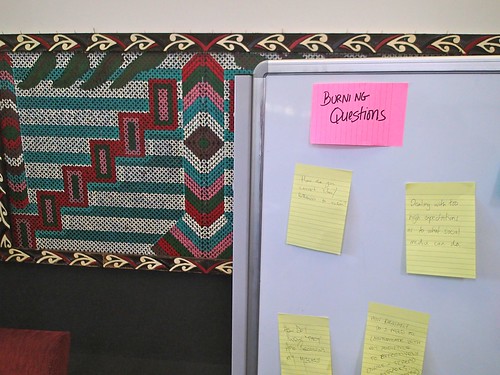

One technique I use is the “Burning Question” board. I used it for my master class at Connecting Up in Australia as I have used it for almost every training I’ve done over the past twenty years. Here’s how it works. When learners enter the room, I ask them to reflect on their “burning question” or why did they want to take this workshop. What question do they want to answer by the end of the day? Not only does this give learners a chance to think about questions they have, but also helps me figure out how how well agenda matches expectations and manage them throughout the day. I’ve used the burning question technique in many different ways over the years, this is an example of one way to do it.
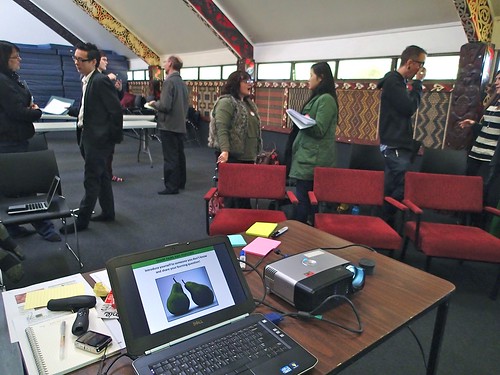
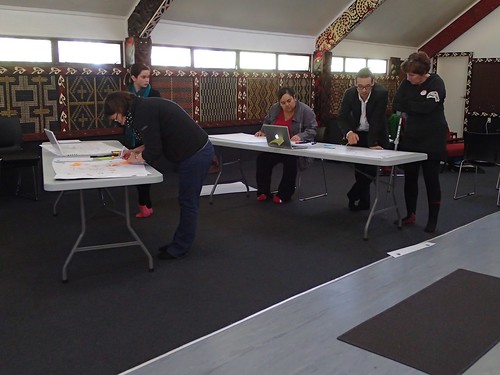
The room layout and physical space is very important to setting the right mood for energized learning. I have written about this in great detail here. I had my ideal set ups in Australia and New Zealand – rooms with circle seating or round tables and space in the room to move around or work on interactive exercises such as creating your organization’s networking map.
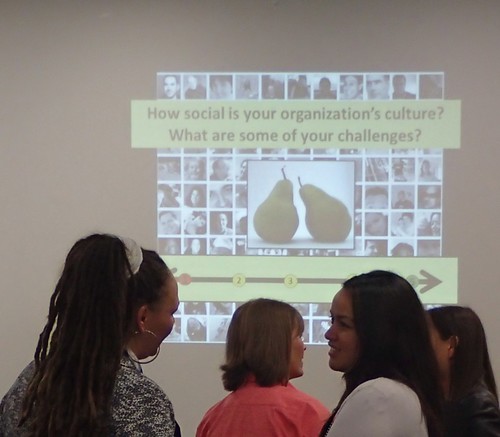
In the orientation or beginning of the workshop, it is also important to get people moving around and talking to one another – and to honor what they already know. This is something you do at the beginning but throughout your content delivery. Effective training is not about stuffing content down people’s throats, but giving them an opportunity to digest it. One technique that I have been using over the past twenty years is share pairs — having people talk with another participant and puzzle about how they might apply the content to their situation. It is also great to see colleagues, like John Kenyon, apply these techniques to their own practice.

Having a formal closing to your training helps extend the learning to action. Learners, despite their best intentions, might find it difficult to apply what they’ve learned right away. That’s why I always do a reflective exercise at the end with the question, “What one thing can you put into practice next week?” I also give everyone a chance to say a few words at the end of the training and pass the “ugly doll.” The green ugly doll has accompanied me around the world and has been in the hands of many people who work for NGOs and social change. So, there is a spiritual ending and a commitment to applying what has been learned as well as communal ending. The ugly doll got passed in New Zealand and in Australia.
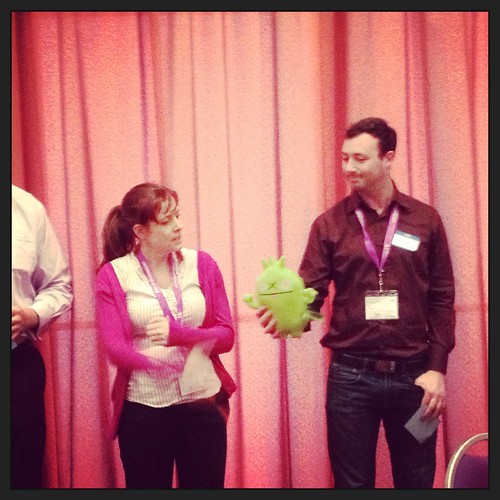
For this workshop, John Kenyon and I were teaching simultaneous workshops. We thought it would be a great opportunity for the participants in both of our workshops to share what they learned. So, we did a double closers. I suggested that we used my “Hello My Name” share pair that I have been doing for the past five years and adapt it as a closer.
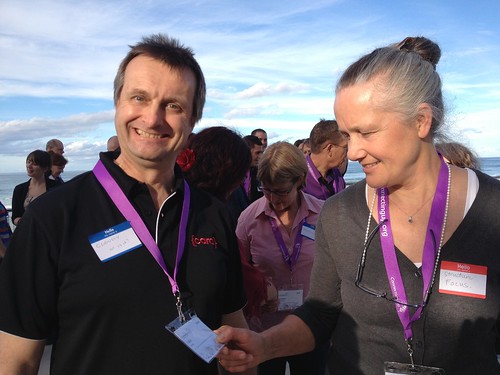
We asked participants to create a name tag comprised of key words of what they learned. My workshop participants used the red tags and John’s used the blue tags. Then we facilitated a series of small groups so they could cross pollinate. Finally, since we were on the Gold Coast on the beach, I suggested that we do a walking debrief on the beach, although we adapted it to the beach promenade. This is an exercise I used in Tunisia. Getting fresh air and walking helps people digest.


Line up #surfers #13cu #netnon (note tourists joined in) Made with @vineapp vine.co/v/bEZXiLl7HEU
— Paul Rees (@paul3141) May 15, 2013
We made quite the spectacle stopping traffic and at one point a tourist took a photograph of us posing for a photograph.

And, for every social media workshop, I like to close by taking a photo of the participants such as the session I did with funders in New Zealand where we discussed social media capacity building and peer learning design.
@kanter great master class today. Most useful handouts and activities ever! #13CU #netnon — Christiana Stergiou (@scribblybark) May 15, 2013
The formula for a great training session includes:
- Energizing learners to be curious
- Great content and learning design
- Closing exercises that inspire learns to apply what they learned
